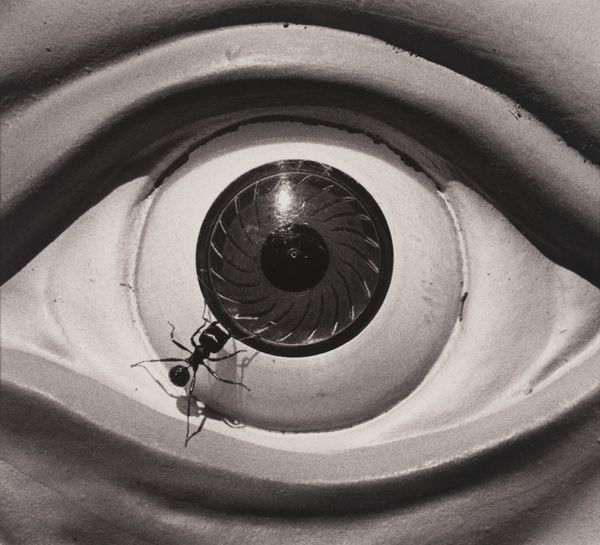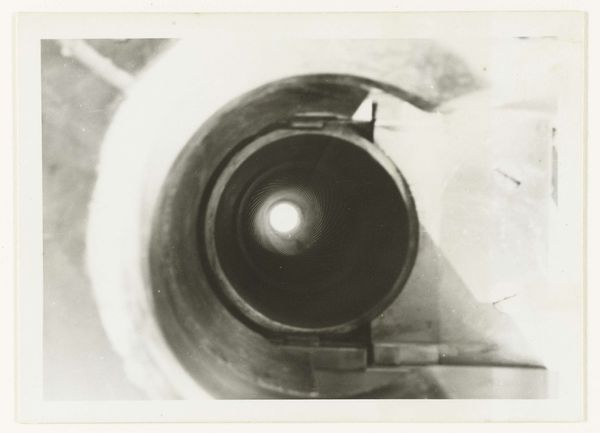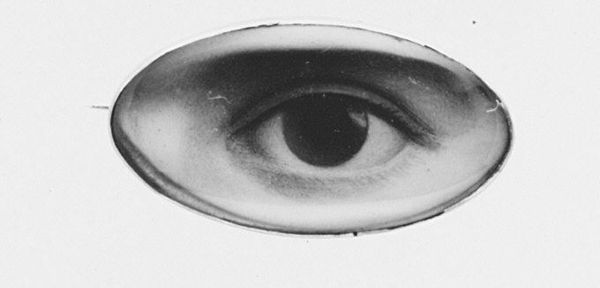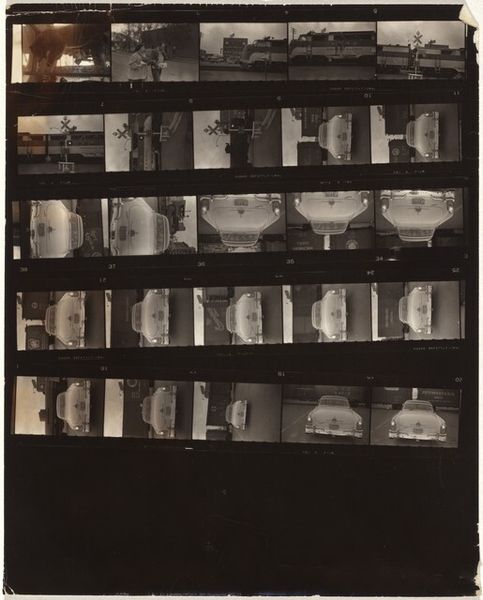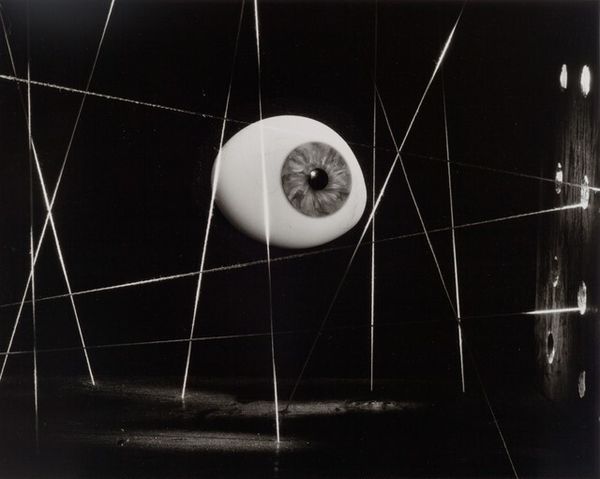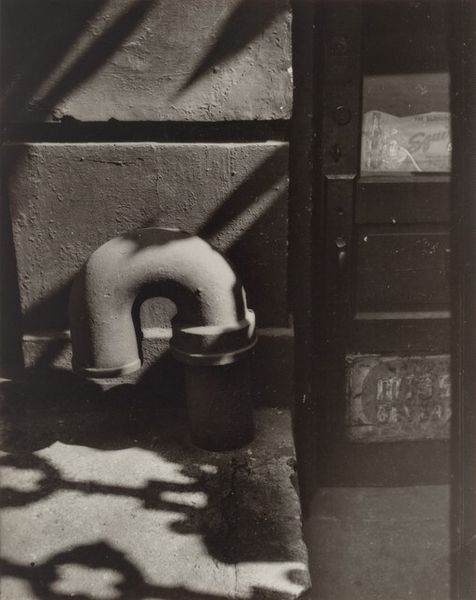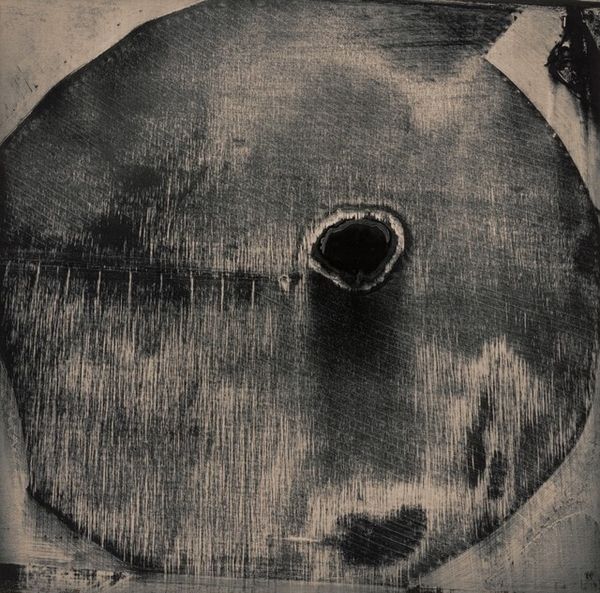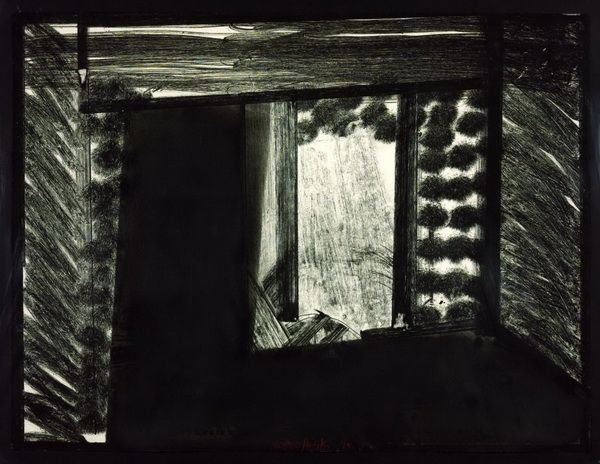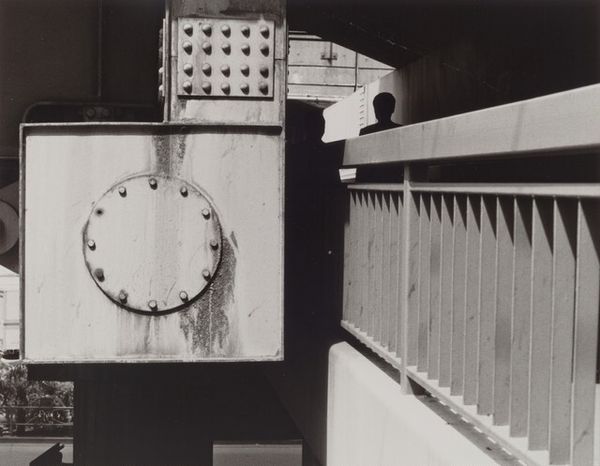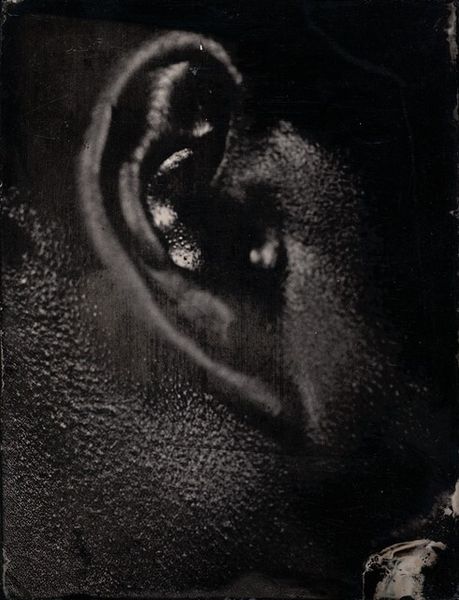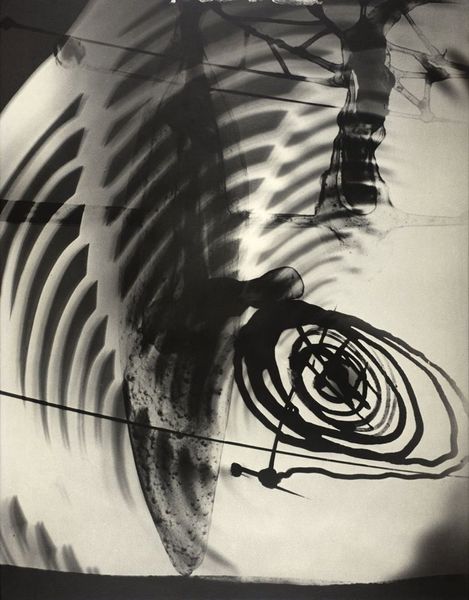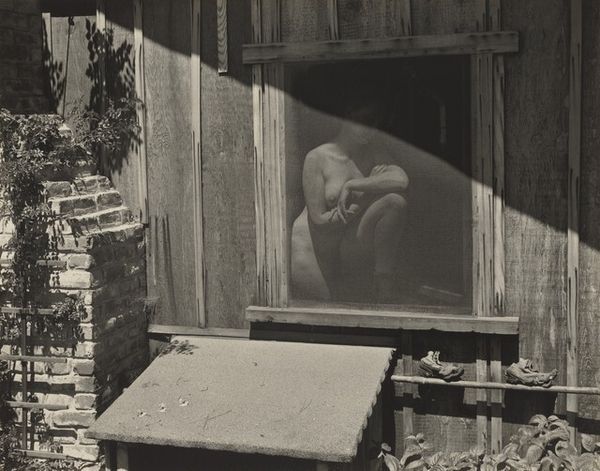
#
3d sculpting
#
3d printed part
#
stone
#
sculpture
#
sculptural image
#
unrealistic statue
#
sculpting
#
black colour
#
dark shape
#
statue
Dimensions: image: 33 × 36.8 cm (13 × 14 1/2 in.) sheet: 40.4 × 50.2 cm (15 7/8 × 19 3/4 in.)
Copyright: National Gallery of Art: CC0 1.0
Editor: Looking at Nathan Lerner’s “Eye on Window” from 1943, the first thing I notice is the way the photograph itself almost feels like an artifact. The subject matter – a painted eye on a cracked window – along with the grainy black and white tones gives this feeling of a relic of some kind. How would you approach an interpretation of this image? Curator: The cracking in the glass really emphasizes the fragility, doesn't it? And consider the image itself as a material object: photographic paper, emulsion, the specific chemical processes used in 1943. Each choice, each element of production leaves a mark. Do you think that sense of the relic might be linked to wartime anxiety influencing materiality of daily life? Editor: That’s interesting – I hadn’t thought of it like that! So, the wartime context could have directly impacted the materials and maybe the subject matter too? Was Lerner using readily available materials? Curator: Absolutely. Think about material scarcity during wartime. What was available, what was considered valuable, and how artists adapted. Perhaps the cracked window and aged appearance speak to resourcefulness – or perhaps, even, a subtle critique of wartime waste and excess depending on the lens through which Lerner approached production and the image's dissemination. Editor: That makes so much sense! I was focusing on the symbolic eye, but thinking about the materiality gives a completely different reading. The photograph’s context is also what gives meaning to the relic. Curator: Precisely! Focusing on the material aspects pulls art away from pure symbolism into real life and social systems. It’s the labor, consumption, and everyday lives embedded in creating art we are studying, not just aesthetic ideas. Editor: I will look for those connections of how the art’s cultural background is tied into materials used from now on, it adds a new layer of understanding. Curator: It's a productive lens. By examining art production and context together, you can begin to challenge conventional thoughts.
Comments
No comments
Be the first to comment and join the conversation on the ultimate creative platform.
